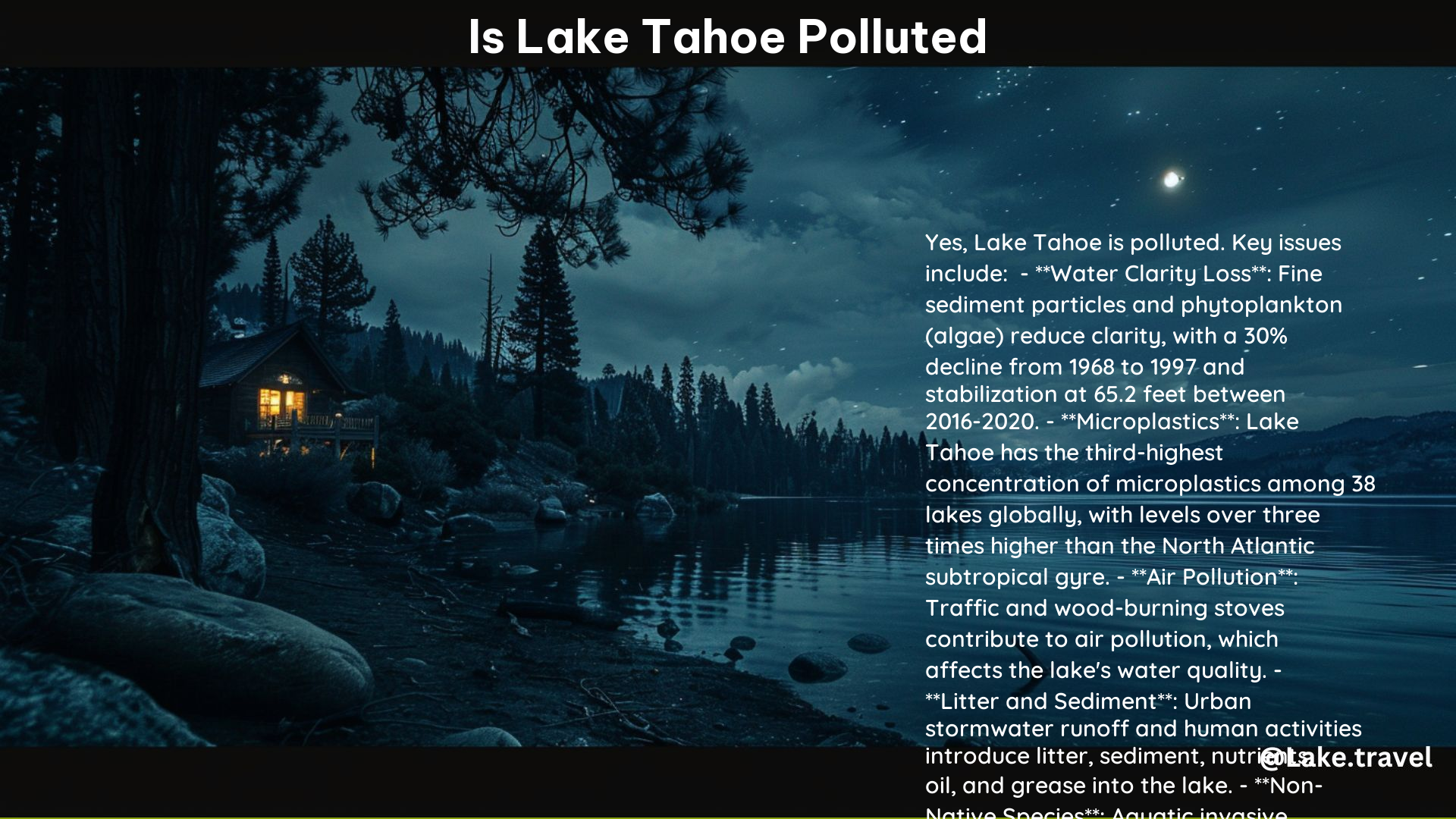Lake Tahoe, a jewel in the Sierra Nevada mountains, is renowned for its crystal-clear waters and breathtaking natural beauty. However, in recent years, this iconic lake has faced a growing threat from various sources of pollution, raising concerns among environmentalists and local communities. In this comprehensive blog post, we’ll explore the main sources of pollution affecting Lake Tahoe and the ongoing efforts to combat these environmental challenges.
Main Sources of Pollution in Lake Tahoe
Air Pollution
The endless traffic on Tahoe’s roads contributes significantly to air pollution, which then flows into the lake, polluting the water. Tailpipe emissions from vehicles also contribute to greenhouse gas emissions, further exacerbating the effects of climate change on the lake’s ecosystem.
Litter and Plastic Pollution
Lake Tahoe has a high concentration of microplastics, with the third-highest concentration among 38 lakes examined worldwide. Plastic debris from textiles, clothing, and single-use plastics are significant contributors to this issue, posing a threat to the lake’s delicate ecosystem.
Urban Stormwater Runoff
When it rains or snow melts, water flows down streets and across parking lots, picking up dirt, road sand, fine particles, and oil, which then flow directly into storm drains that lead to Lake Tahoe. This urban stormwater runoff is the largest source of pollution affecting the lake’s clarity.
Sediment and Nutrient Pollution
Fine sediment particles and nutrients such as phosphorus and nitrogen fertilizers support the growth of algae, which can harm the lake’s ecosystem. Accelerated erosion due to human-caused disturbances also contributes to sediment pollution.
Microplastics
Microplastics from clothing, packaging, and other plastic residue have invaded freshwater ecosystems, including Lake Tahoe. These small fragments can be ingested by organisms, which can then be consumed by humans, potentially affecting human health.
Efforts to Combat Pollution in Lake Tahoe

Keep Tahoe Blue
A local environmental organization that fights to clean up litter and pollution in Tahoe. Their programs, such as the Tahoe Blue Crew, have picked up 15,000 pounds of litter in the Tahoe and Truckee areas since 2021.
Lake Tahoe Destination Stewardship Plan
This plan tackles environmental issues facing the Lake Tahoe Basin, prioritizing litter enforcement and environmental sustainability and stewardship.
Shuttle Services
Alternatives to driving, such as the Ski Bus, help reduce the number of vehicles on the road, decreasing emissions and pollutants.
Statistics and Facts
| Statistic | Value |
|---|---|
| Yearly Visitors to Lake Tahoe | 15 million |
| Lake Tahoe’s Ranking for Microplastic Concentration | 3rd highest among 38 lakes examined worldwide |
| Decline in Lake Tahoe’s Water Clarity (1968-1997) | Approximately 30% |
| Fine Sediment Particles’ Contribution to Lake Impairment | Roughly two-thirds |
| Goal of Lake Tahoe Total Maximum Daily Load (TMDL) | Restore the lake’s historic deep water transparency to 29.7 meters (97.4 feet) by 2076 |
In conclusion, Lake Tahoe is facing significant environmental challenges due to various sources of pollution, including air pollution, litter and plastic pollution, urban stormwater runoff, sediment and nutrient pollution, and microplastics. However, local organizations and initiatives are working tirelessly to combat these issues and restore the lake’s iconic clarity and natural beauty. As visitors and residents of the Lake Tahoe region, we all have a role to play in preserving this natural wonder for generations to come.
